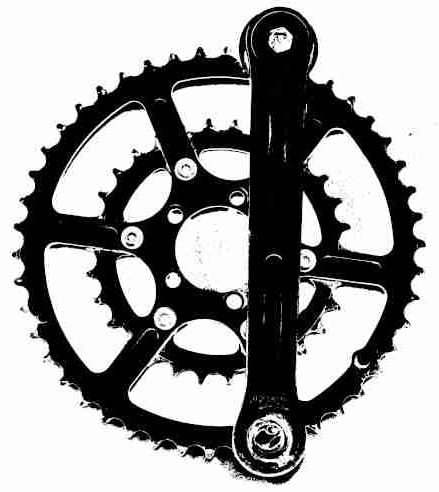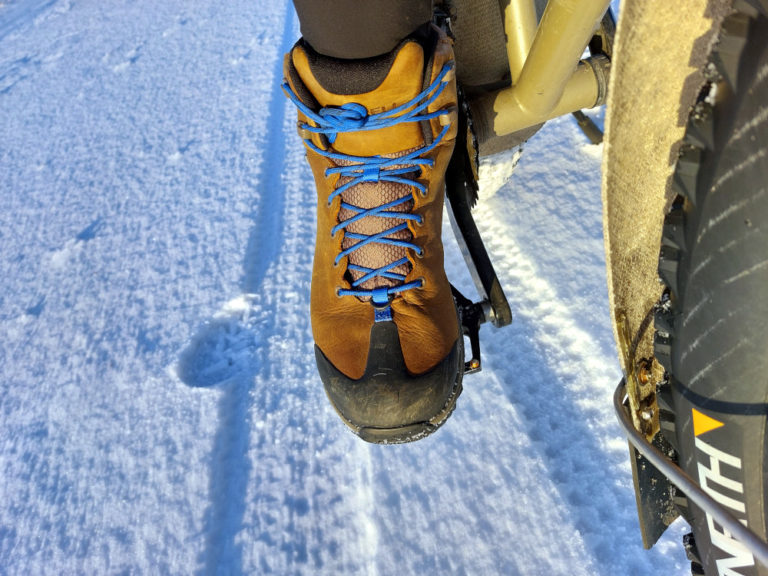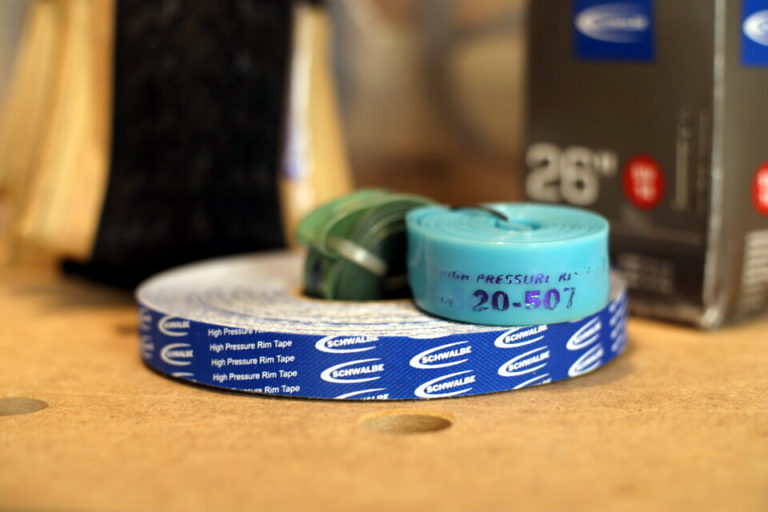Fat Bike Tire vs. Rim Width
Fat tires for bicycles are commonly understood as tires with a nominal width of 3.5″ or more. Most common fat tire sizes fall between 4″ and 5″. Fat tires also take special-purpose wide rims, which are available in widths 60 mm up to 100 mm. How should you match these tire and rim sizes up?
This article tells you which fat bike rim and tire widths are compatible and how rim width affects the tire. Unlike for MTB rims, there were no summarized resources available, so I decided to go through the manufacturer recommendations and share the answers with you.
Tire vs. rim compatibility
The table below lists fat bike rim widths and the tire widths that are fit this rim. I compiled the table based on recommended widths of tire and rim manufacturers.
Fat bike rims come in widths from 60 mm to 100 mm, with 80 or 85 mm being the most common. Note that unlike MTB rims, the reported width for fat bike rims is usually the external width.
| FAT BIKE TIRE VS. RIM Rim width (outer) [mm] | Description | Tire width [in] |
|---|---|---|
| 60/65mm | narrow | 3.8″…4.6″ |
| 75mm | 4″…5″ | |
| 80/85mm | standard | 4″…5″ |
| 90mm | 4.2″…5.5″ | |
| 100mm | extra-wide | 4.5″…5.5″ |
Fat bike rims and tires are quite compatible in width: most rims can take most tire widths. Only the extreme combinations – the very widest 5″+ tire on a 60/65 mm or a 4″ tire on a 100 mm rim – may be challenging.
The standard 80/85 mm rims are a very good all-around choice as they take practically all available fat bike tires. Also in terms of riding properties you are not going to be missing much either way.
Fat bike rim width is rarely a compatibility issue. But why are there so many rim widths?
Effective tire width
Rim width is usually selected to adjust the effective tire width. Although a tire may be nominally 4″ wide, in reality it behaves like a wider tire on a 100 mm rim than on a 65 mm rim, for example.
A narrow rim pulls the tire cross section to a tighter radius; a wide rim flattens it out. This results in different tire face curvatures and changes how the tire rides.
Wide rim – More float
The main advantage of a wider rim is that it gives your fat bike tire more “float”.
Float is short for flotation, and refers to the ability of the tire to suspend terrain roughness. It is sometimes also used to describe the ability to cross soft terrain like mud or snow without sinking in too much.
A wide rim gives you more float because it flattens out the tire cross section. This helps to bring more tire into surface contact with less deformation in the tire or terrain.
How much more float does a wider rim give? Does a 100 mm rim (vs. 80 mm) make a 4″ tire work like a 5″ one? We do not sadly have any data on this from the manufacturers.
The bottom line: If you ride a lot in snow, mud or sand, prefer 80/85 mm or 100 mm wide rims.
Narrow rim – More frame clearance
One advantage of a narrower rim is increased frame clearance: the narrow rim pulls the tire thread shoulders in. More frame clearance means you have less risk of tire rub and more space for fenders.
You can alternatively use the better clearance to squeeze in a larger nominal width tire into the same frame. A 60/65 mm rim helps if space is needed at tire shoulders where the the thread lugs come closest to the chain and seat stay bridges.
Narrow rim – Better cornering
Rim width also has an effect on the cornering behavior of the tire.
Most riders think that a narrower tire and rounder cross section corner more naturally. A narrow rim has the advantage here: it makes the same tire shape rounder and a bit narrower.
The flattening effect of a wide rim makes a tire a bit harder to corner: you have to tilt the bike more to turn. This may be a concern for people who race or otherwise put an emphasis on ride feel. Personally I am not bothered.
In short: prefer 60/65 mm rims for fast and technical riding where maximal float is not needed.
Rolling resistance?
Rim width probably has some effect on rolling resistance. With everything else equal, wider tires roll lighter than narrow (see Schwalbe’s explanation). One would assume wider rims make tires roll lighter too.
The only data I could find on rim width and rolling resistance offroad (Maier et al., 2018) was for 2.25″ MTB tires (not fat), and showed only a very weak connection. How much you’d gain by going from 80 mm to 100 mm fat bike rims, is hard to tell.
Conclusion
Fat bike rim and tire widths are pretty widely compatible. This allows you to pick the rim for your fat tire to tailor its properties to your riding style.
If you want maximum float for soft terrain, go fat on the rim too: 80/85 mm or 100 mm (for 4.5″ and up). If you ride fast and technical single-track, consider 60/65 mm.
When in doubt, for for 80/85 mm – works OK with all tires and styles!



